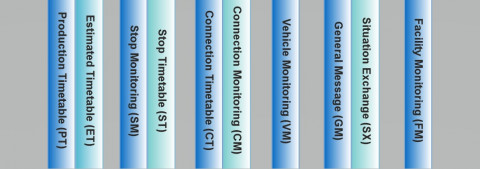SIRI v2.1 Part 1 to 3 Open for Review
- Image

We have discussed for a couple of years the impending update to SIRI.
The updates have now reach the formal consultation stage of the CEN standards process.
During this stage the documents are available for review to identify editing errors, inconsistencies and similar.
Introducing the Changes to SIRI in v2.1
- Image

SIRI v2.0 has been around since 2013. A lot has changed in the world of public transport technology in the subsequent 8 years.
To ensure that the SIRI standard meets current and foreseeable future requirements and known problems with the schema are fixed an update to the standard has been being worked on by the CEN SIRI working group for the last couple of years.
Advice Document on Vehicle Occupancy in SIRI 2.1
- Image

The measurement of vehicle occupancy for buses in real time is not something that was carried out regularly or, was in widespread use in the UK until the onset of the COVID-19 pandemic. Over the course of 2020, significant work was carried out and progress made, by suppliers and bus operators to introduce passenger counting solutions and present the information to passengers.
Advice was provided in RTIGT039 Providing Vehicle Occupancy Data:- Data Interfaces in May 2020.
Updated Report: Real Time Information Exchange Using the SIRI Standard
- Image

The guide to SIRI has been updated. The previous version had not been updated for many years and was out of date.
This report outlines the background to SIRI and describes the different functional services provided as well as addressing how SIRI can be used in procurements.
https://www.rtig.org.uk/system/files/documents/RTIGT023-2.0%20Overview%20of%20SIRI.pdf
BODS SIRI VM Profile Released
- Image

The SIRI VM profile guidance for providing location data to the BODS service has been published as a webpage:
DATA4PT project
- Image

The DATA4PT EU project aims to advance data-sharing practices in the public transport sector by supporting the development of data exchange standards and models, to fulfil the needs of multimodal travel information service providers. More info on the official WEB site.
Exchange of Disruption Information using SIRI-SX
- Image

Working with Transport for the North we have developed a guidance document on implementing SIRI SX and its use in sharing disruption data between systems. The document includes use cases and sample XML.
The document can be found in the documents section of this site.
Providing Vehicle Occupancy Data - Data Interfaces
- Image

There is a lot of interest in vehicle loading and capacity so we have put together a short paper on the data exchange formats that exist now to enable you to provide vehicle occupancy data.
We are releasing this as a public document, for free, rather than just to members because of the interest in this topic in the wider transport community as we try to support the rebuilding of confidence in public transport following the COVID pandemic.
